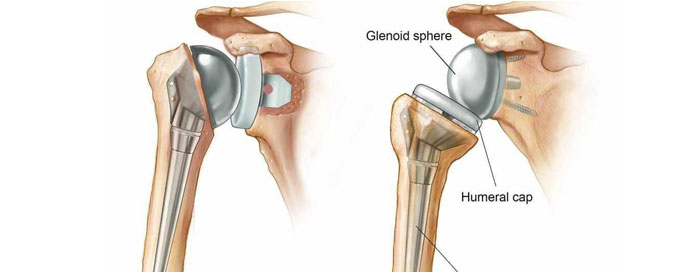Services / Dr. Ravi Bhanushali

Shoulder replacement, also known as shoulder arthroplasty, is a surgical procedure to replace a damaged or diseased shoulder joint with an artificial implant or prosthesis. This procedure is typically recommended for individuals with severe shoulder pain and dysfunction caused by conditions such as osteoarthritis, rheumatoid arthritis, avascular necrosis, or severe fractures.
Here’s an overview of shoulder replacement:
Indications: Shoulder replacement is considered when conservative treatments such as medication, physical therapy, or injections fail to provide adequate relief from shoulder pain and dysfunction. Candidates for shoulder replacement typically have significant pain, stiffness, weakness, and limited mobility that significantly affects their quality of life and daily activities.
Preparation: Before the surgery, patients undergo a thorough evaluation, including imaging studies such as X-rays, CT scans, or MRI to assess the condition of the shoulder joint and surrounding structures. Patients may also undergo pre-operative tests to evaluate their overall health and fitness for surgery.
Recovery and Rehabilitation:
Recovery and Rehabilitation:
